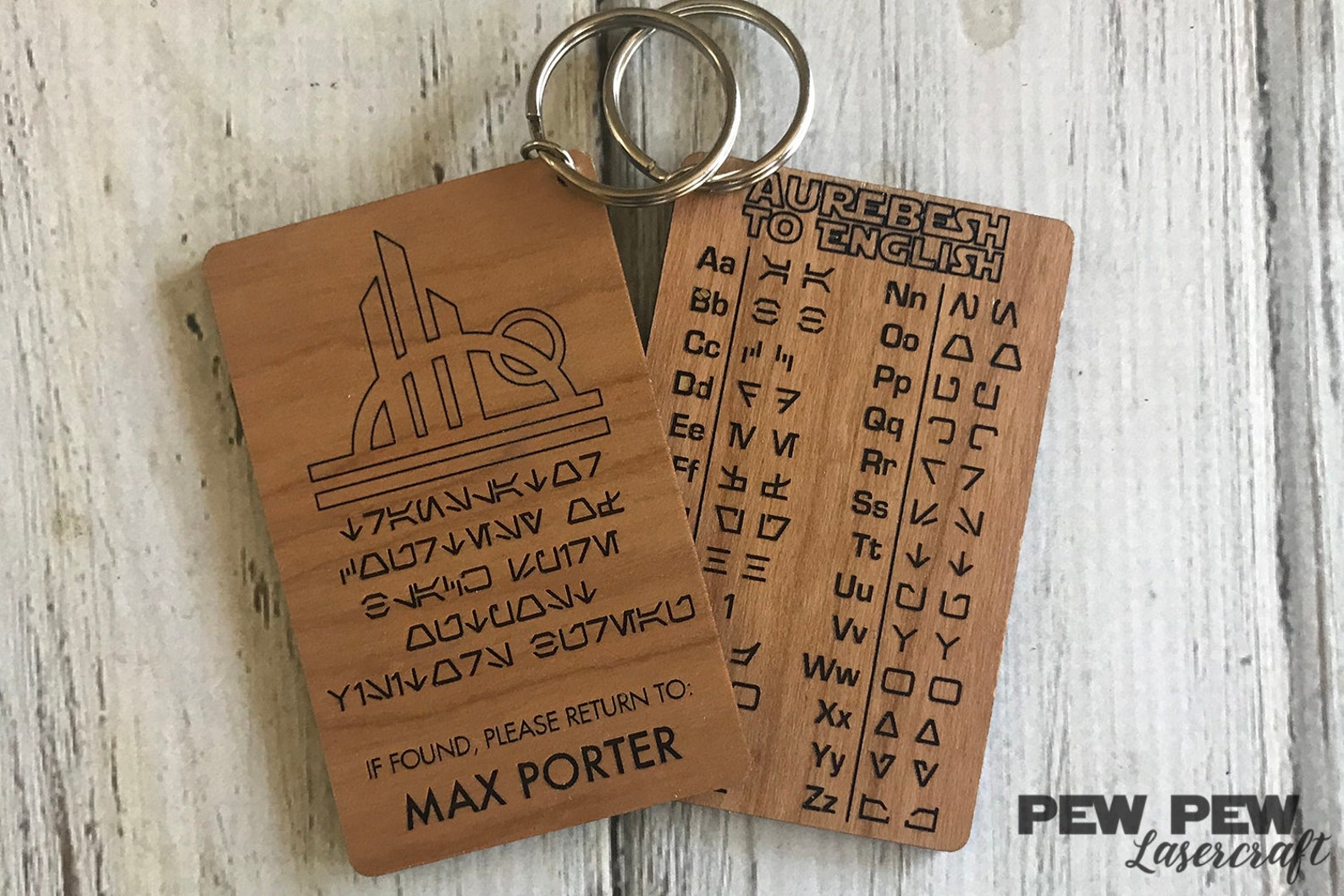
#Aurebesh translator with voice software#
Still, the software to drive it all still has some complexity to it - you can't entirely leave it all to the sound board. It also was very easy to load and re-load sounds for testing as well. WAV files are bigger than OGG but need no decoding, which allowed for seamless playback. An Adafruit WAV/OGG board fit the bill perfectly, and had many ready-to-use modes of operation right out of the box. I wound up using hardware made for the purpose. A problem with WAV files is that they take up a lot of memory.

Playing sounds is easier than it used to be.One batch process later, and I had a new and distinct voice for the second helmet. In the end, I discovered that using the Censor -> Gibberish filter in Goldwave changed the samples enough that they sounded very different, but still sounded like a Droid.

Pitch shifting, etc wasn't enough and never sounded right. It's not enough to give them different sample sets of the same basic sounds because even if the "words" never repeat, both helmets still sound the same. It was important for two helmets to have two different "voices" of Droid because otherwise a conversation just sounds like one Droid talking to (and over) itself. Giving each Droid helmet a different "voice" was important but much harder than expected.I talk a bit more about Droid sounds and using them here on this blog post.
#Aurebesh translator with voice download#
You can download my sample sets from the HARDWARE section. In the end, the key was to make a sample set of short "Droid" speech bits that sounded good together and could be played seamlessly, and play them semi-randomly to represent speech. I learned that to get something that sounds good and emotional is no easy feat - I read a reference to an interview with Brett Burt (sound designer for Star Wars) in which he stated that making R2D2's voice was one of the hardest things he had done. "Droid" is so much more than beeps and boops - my original attempts to create the sounds programmatically were early failures and some research shows I was not alone. I learned I was not the first to discover this. Making "Droid" speech that sounded good was a major job that was far more difficult than expected. A dynamically-generated "Droid" language that sounds good is a Holy Grail. No easy solution to making good Droid sounds.Here are some of the more interesting ones: Many interesting or challenging things came up during the design process. The helmets use wi-fi to coordinate with each other (communicating status to each other, establishing transmission right-of-way, and so on.).The RGB LEDs embedded into the helmets aren't just cosmetic - they represent specific activity and status reports.The receiving helmet(s) play your actual voice directly into the ear, so no one else hears.The helmets transmit your actual voice on the sly to the other helmet(s).When you speak quietly from behind the helmet, no one hears your actual voice. Your voice is picked up with a Laryngophone (throat mic) which is not only immune to ambient sounds (since it doesn't use sound waves) but it works even if you speak very quietly.The helmets sense when you are talking and emit "Droid" instead.To get the effect, this is what happens behind the scenes: There is no actual translation happening. The Droid "language" being emitted is meaningless gibberish.

These helmets really do work, but like special effects - they are using some smoke and mirrors. Demonstration of speaking "Droid" but transmitting voice.įirst, an important detail.


 0 kommentar(er)
0 kommentar(er)
